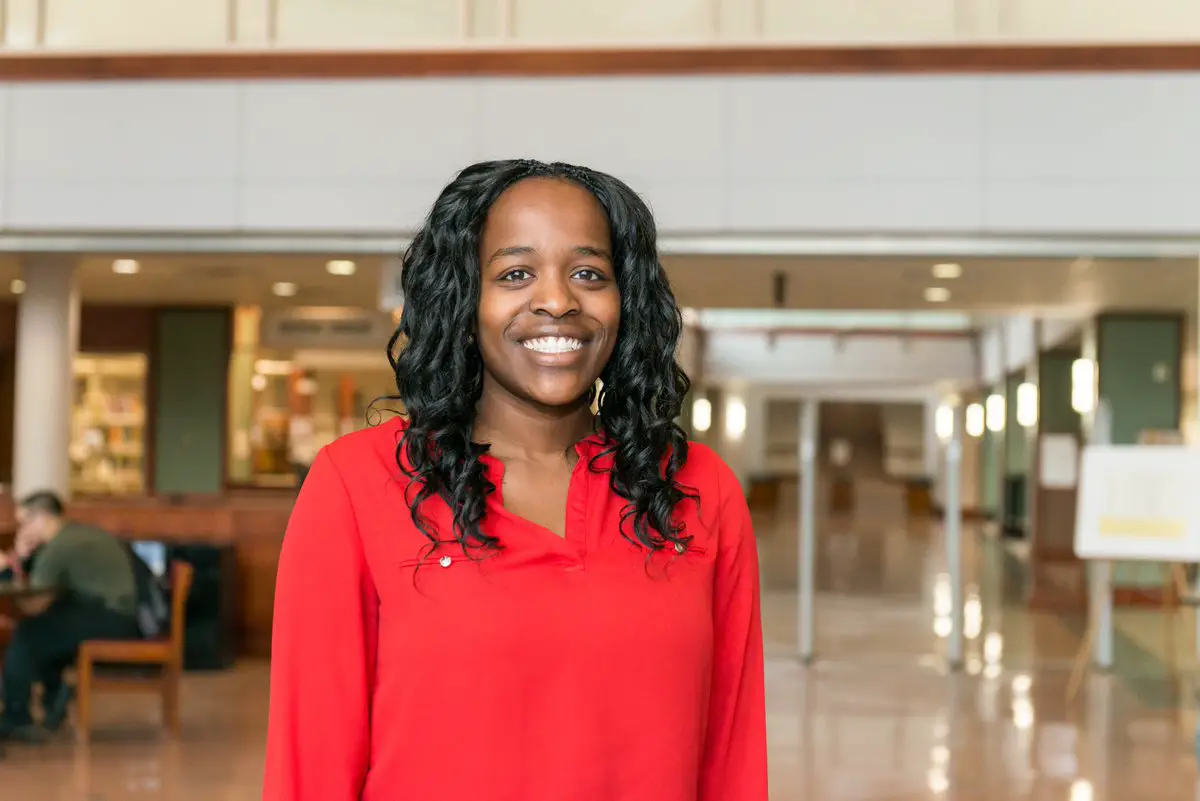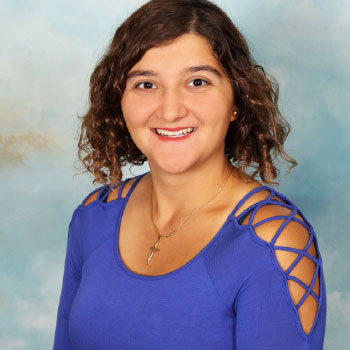A senior chemical engineering student at the University of Maryland, Baltimore County (UMBC), Naomi Mburu is the first UMBC student to win the prestigious Rhodes Scholarship, guided by her values and interests as an adept researcher.
As a Rhodes scholar, she plans to pursue her doctorate degree at Oxford University, focusing her research on nuclear fusion reactors. From her research in the planetary science department at the Johns Hopkins Applied Physics Laboratory to working on the Large Hadron Collider at the European Organization for Nuclear Research (CERN), Mburu prides herself on making her research as applicable and accessible for lay people as possible.
Under the leadership of Dr. Gymama Slaughter, Mburu currently conducts research on expanding the viability of a soldier’s limbs lost on the battlefield. Apart from her school and research priorities, she also enjoys volunteering in the community as a mentor-tutor for elementary school students and leads the National Society for Black Engineers (NSBE) as Region 2 vice-chair person. When Mburu has her mind and heart set, she works hard to live out her dreams and passions.
Elizabeth Lucy Ivanecky: Why did you choose UMBC to pursue your studies?
Naomi Mburu: Initially when I was choosing colleges, I wanted to go far away from Baltimore since I’ve lived in the Baltimore area my entire life. However, thinking logistically and talking with my parents, it made sense for me to go to UMBC where I could bypass the debt typically associated with college. It was a financial choice.
ELI: Why did you choose chemical engineering?
NM: The choice to do chemical engineering or mechanical was arbitrary. I just picked one. I knew I wanted to do engineering because I really liked the teamwork aspect and the practicality of what we were doing.
ELI: When did your interest in engineering begin?
NM: I wanted to be a lot of things growing up, one of them being an inventor, which is similar to an engineer. But eventually, I decided I really liked physics and engineering near the end of high school. I started to think how applicable math and science are to more practical concepts. For example, in the technology used for my phone, there is chemistry deciding which materials are used. I always ask the question, “How does it work?”
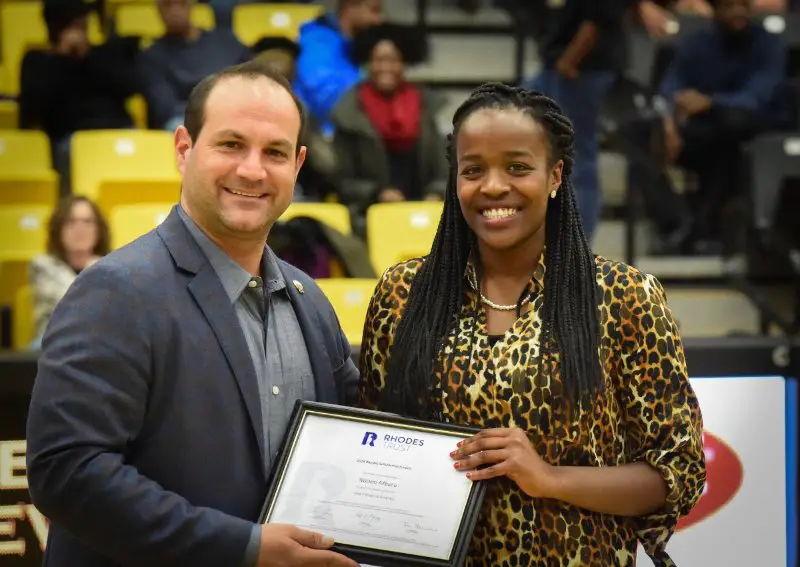
ELI: When did your interest in research begin?
NM: I was just looking for something to do in the summer after my senior year of high school. A UMBC professor, Dr. Lasse Lindahl, offered me the chance to come work in his lab in the Department of Biological Sciences. Our research focused on the process of phosphorylation.
At the time, I already liked the idea of creating new knowledge. While it’s incredibly intimidating to be in a lab and figure out something no one else has found before, it’s exciting to think you can do this and people do this all the time. The experience already gave me the confidence to make sure my research was as understandable as possible, which is something I still do now.
ELI: You’ve done so much research so early in your career as an engineering scientist. But which research endeavor was your favorite?
NM: My favorite was working in Geneva, Switzerland, at the European Organization for Nuclear Research (CERN). In addition to the research, it was an interesting experience being in a different continent. The labs where I did my research were in two different countries. Less than half was in Switzerland and most of it was in France. When you work, they give you a bike. I’d be working in the morning in Switzerland and bike to France in the afternoon to run tests and set up equipment.
The main premise of my research was that we wanted to understand what kinds of impurities were being released into the atmosphere from the Large Hadron Collider in the lab. That collider produces a lot of radiation because you’re essentially colliding two protons at really high speeds, so you have so much radiation, which ends up causing a lot of impurities to be formed from the gas mixtures.
When those gas mixtures are radiated, it produces different radicals that are bad for the environment. You have to be able to monitor how many radicals are leaving in order to figure out if the gas mixture you are using can continue to be used and how much you need to be venting compared to how much you should be recycling in the system.
I set up so much equipment that was really old. I would fix things and try to understand how things worked. Working in different countries in the context of being a researcher as opposed to a study-abroad student was a new experience for me. You got paid, cost of living was covered and you got to enjoy the weekend.
ELI: Wow, that’s really exciting. Let’s talk about some of your research back home in America. What did you work on during your time researching at the lab at Vanderbilt University?
NM: In the summer of 2015, I worked in a mechanical engineering lab where we focused on creating an artificial artery that could mimic the blood flow patterns in a mouse or human artery. If you want to test a drug, you have to use a mouse or human; however, there are a lot of ethical reasons why you don’t want to do that.
Having an artificial artery that you could 3D print and test, the same way you’d test a mouse artery, you could bypass the ethical issues to a certain degree.
My professor let me choose what I wanted to do. He treated me like a graduate student. I came up with my own hypotheses and tested them. Usually, they’d be wrong; so, I would have to go back and test them again. Sometimes I would be able to shadow grad students at the lab.
One of the grad students needed a saw to be built custom-made. He took me down to the machine shop and taught me how to use all the different tools. We ended up building a whole saw, an electric saw. He let me help design it and put all the pieces together.
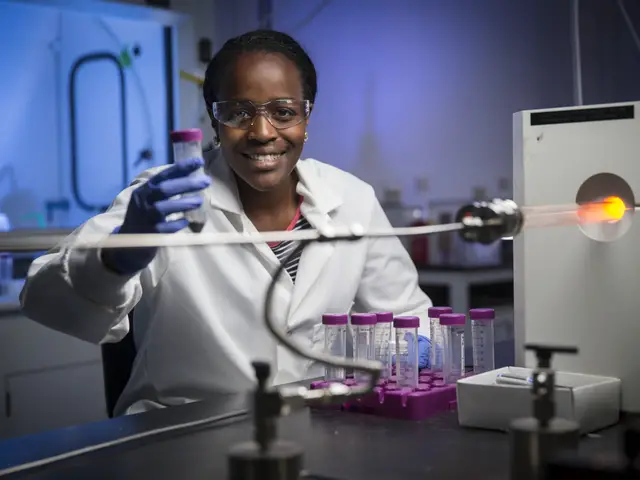
ELI: You mentor youth in elementary and high school. Can you tell me about the experience?
NM: At UMBC, I am a part of the Honors College. During freshman year, you have to do community service activities. I decided to do an activity involving helping out in an after-school program nearby. I would help kids with homework and make snacks for them. I really enjoyed it, but I wanted to do something that was more science- and engineering-oriented since I am a scientist.
The next semester, one of the students at UMBC started a weekend program for students in elementary, middle or high school for specifically girls from Baltimore City who are interested in science. You would help those girls do a science project for the whole year. At the very end, they could publish it if it was worth publishing. I signed up for the program and I was in the group during its first year, figuring out what worked and didn’t work.
Every Saturday I would go to a place on campus to meet with the student I was paired up with. She and I worked on a research project that involved fish. She wanted to study the conditions of giving birth for fish, namely, how the temperature of the water and outside affects the health of the fry coming out. Since it’s difficult to do that with real humans, we decided to use fish. So, we had the experiments running at school, but the tanks were so large that we had to put them in my apartment. I had three huge fish tanks sitting at my apartment at school. One of them was hot, one of them cold and one of them was at room temperature.
From there, we tested which fish tank had the most eggs produced and how long the fish lived in each of the tanks relative to the temperature. It was a really fun experience for the both of us because it was the first time the student did research. We thought about how to make a hypothesis and how to synthesize the data at the end to make it interesting to people. After, we made it applicable by applying our findings of the fish to how mothers can use this data to help their children. It is abstract, but she really enjoyed it and I enjoyed helping her with the project.
ELI: You are also part of the National Society of Black Engineers (NSBE). What has that experience been like for you?
NM: I joined NSBE in my freshman year. At UMBC, as an engineer, you have to join at least one professional organization. It was so cool to see so many people who looked like me because you don’t see that too often. I decided I wanted to run for a position at NSBE, which was the Pre-College Initiative Care position. This role called for the student to figure out ways for UMBC students to work with elementary, middle or high school students.
In my sophomore year, I ran for that position and got it. The big thing that year was to start a NSBE junior chapter. It gave me good experience with how organizations are started and the obstacles you face when you try to start organizations at public schools. I later ran for president of the NSBE chapter at UMBC and got that. That year, we needed to increase the presence of our organization.
Today I am the Region 2 vice-chair person, so I am in charge of all the NSBE chapters in Maryland, D.C., Virginia, North Carolina, South Carolina, West Virginia, part of Pennsylvania, Delaware, all the chapters in Europe, some in North Africa and the Middle East. It’s been exciting to know how these chapters operate.
ELI: What is important to you about research and how do you know you’ve done good research?
NM: I have to be able to apply it to the world and make the research known and logical to people outside of the scientific community. For example, the research I want to do at Oxford is on nuclear fusion. Many people don’t know about this topic and just assume it’s a scary word.
I did a presentation in one of my classes, and it had to be on a topic that everyone could understand. I decided to do mine on nuclear fusion and how it’s commonly misunderstood and why it’s important to focus on this research. I put a lot of care and effort into that presentation so that people understood why different forms of energy that we’re using now are useful but won’t fulfill the needs we have.
I focused on what nuclear fusion is and how it is different from other forms of energy. It’s very important to me that I explain research properly to people outside of the field, otherwise it stays a mysterious topic that not many know about.
ELI: What kind of research have you been working on with Dr. Gymama Slaughter?
NM: I’ve been working with Dr. Slaughter since fall 2015 to now. My research there is developing bio-fuel cells. We were trying to make a glucose bio-fuel cell available in your body to run a pace maker or anything in the body that needs power. It uses so little glucose that it doesn’t affect you in any way even if you’re diabetic. We finished the project the first year.
Now, we work in collaboration with Johns Hopkins Applied Science Laboratory to develop a case that if someone on the battlefield loses a limb, they can put it in the case and hook up our sensors and understand the life expectancy of this limb. Usually when you lose a limb on the battlefield, you don’t have access to batteries or energy sources.
We wanted to make sensors that could power themselves without the help of batteries to determine if the limb was still viable and if it could be attached to the body again. We’re making a low-cost box to use these sensors, put the limb in the box, and treat the limb over time so that we can understand the viability of organs from a couple hours to a couple of days.
Dr. Slaughter is a no-nonsense kind of person. She has very high expectations of us; so, you have to work very hard, but you also get rewarded for the hard work you do. Every year that I’ve researched with her, I co-published one publication with her in a peer-reviewed journal. She makes sure hard work is rewarded. That’s been the most fundamental research I’ve done since I’ve been involved in it for so long.
ELI: Why do you think interdisciplinary study in the field of science and engineering is so important?
NM: The problems that research is tackling now are becoming more and more interdisciplinary as we progress in our knowledge of science. It is becoming more evident that principles and ideas from different disciplines are required to develop a comprehensive understanding of problems like energy generation and disease proliferation.
For example, I am interested in nuclear energy, which combines mechanical engineering, chemical engineering, civil engineering, physics, public policy and chemistry to create a nuclear power plant. Because of this, we need to be able to communicate across disciplines so that science can continue to progress forward.
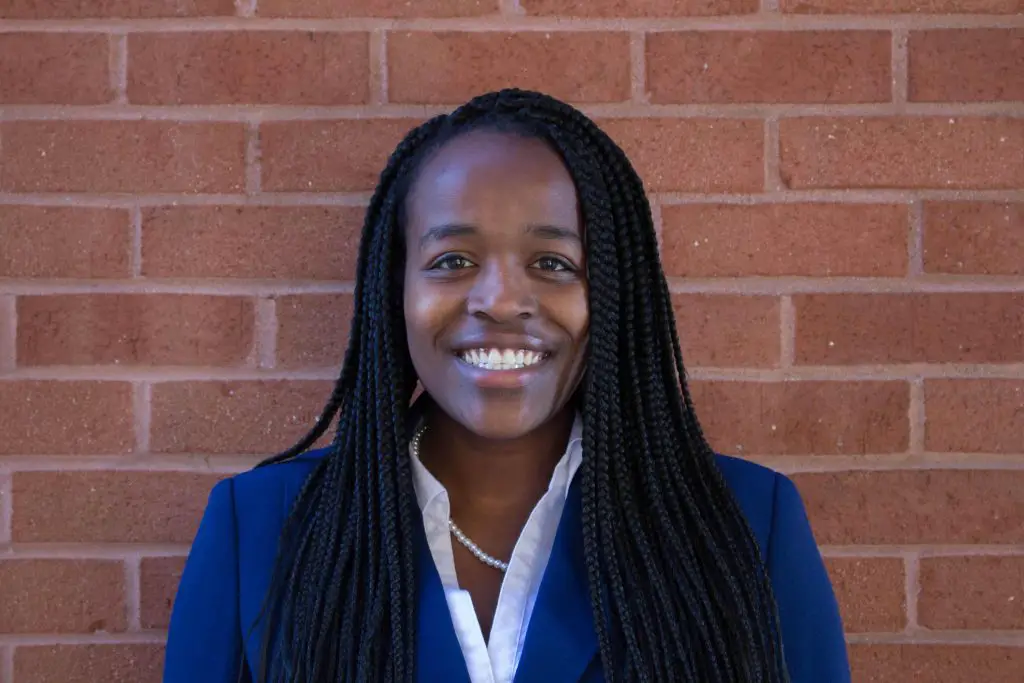
ELI: Why is it important to you that you won the Rhodes Scholarship as a woman, minority and engineer?
Winning the Rhodes Scholarship felt like more than just a win for me. It felt like a win for my entire school and that we all won it. Since I was the first to win at UMBC, the whole school was celebrating — at one point, there was a billboard with my face on it on campus. I had so many people reach out to me from all over the world saying how much it means to them as a woman, engineer and minority student that I won.
UMBC’s first Rhodes scholar is not just an engineer, black and a woman, but all three at the same time. Most Rhodes scholars are humanities students, usually men and usually white — it just goes to show how well UMBC’s training prepares minority females in engineering to compete at the national and global levels.
You don’t need to follow a traditional path. If I had grown up wanting to be a Rhodes scholar, people probably would have told me to study policy, not engineering. Or that I had to be the captain of the football team. Despite the fact that I was very different from an usual Rhodes scholarship applicant, I won anyway.
Ultimately, you don’t need to follow a cookie-cutter path that everyone follows to get to where you want to go. If you do the things your heart is leading you toward, things will work out. Over time, your actions and interests form a picture of you that is unique to you and isn’t artificial. You learn more about your interests that way and have the freedom to fail at things.
ELI: As a recipient of the Rhodes Scholarship, how do you hope to change the world?
NM: I envision myself changing the world by helping to break down barriers to education, especially in the sciences, by serving as a role model, teacher and policy influencer. I want to make it easier for any one of any background, gender or race to go into sciences or engineering. I hope that one day, women and minorities will no longer be viewed as an anomaly when they walk into a scientific laboratory to conduct research.
ELI: What are your research interests as a future doctoral student at Oxford University?
NM: Under the direction of my future doctoral supervisor, I want to design the diverter in a nuclear fusion reactor — the hottest part of the reactor. Right now, more research is going into how we can model this part on the computer instead of testing it in a facility.
We have no way of creating those high temperatures in a reactor without a testing facility; in order to test the diverter, we need to already have the technology built. Before building anything, we need to create computer simulations to make sure the reactor is safe. I want to be a part of developing those computer simulations that help nuclear fusion be more accessible and safe.
ELI: What are your future aspirations?
NM: I am still unsure about what exactly I want to pursue after graduation, but I think that I will end up pursuing a career in research for a few years and then I will transition into working in policy. While I love conducting scientific research, I know that I want to have an influence in the policy realm in terms of creating educational opportunities for all people.


